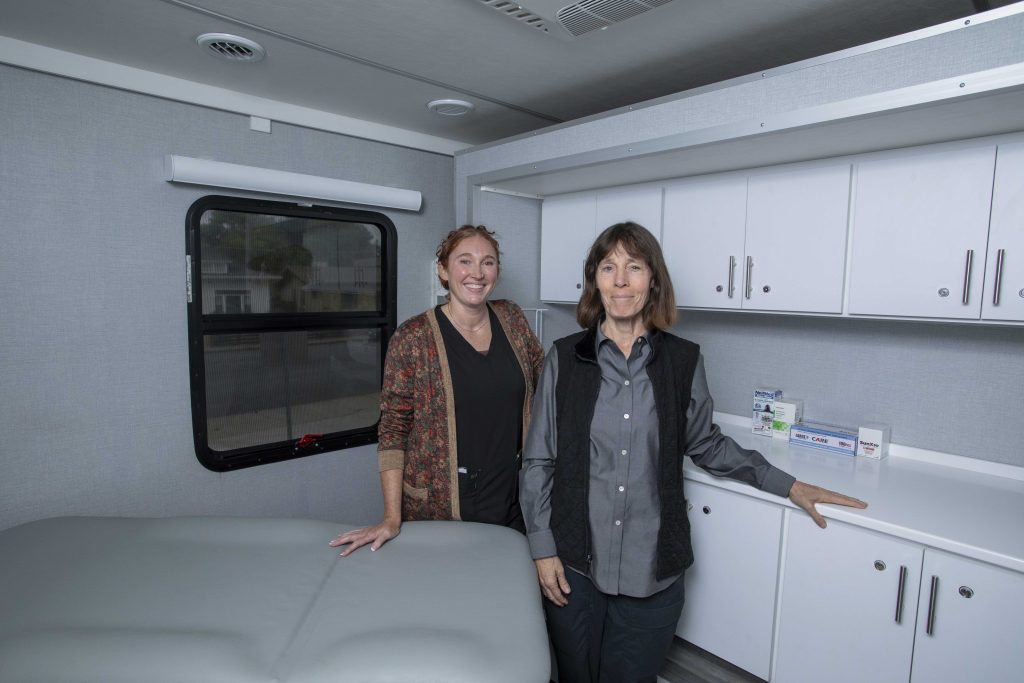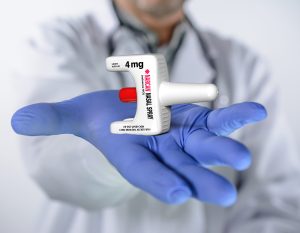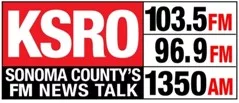
Chris Geiger was driving to work at Center Point DAAC’s addiction-treatment headquarters in Santa Rosa when an ambulance zoomed past and turned down the street toward the recovery center.
Suspecting a client may be in crisis, Geiger arrived to find EMTs already at the scene in a parking lot across from the center treating a man for a fentanyl-induced emergency. According to DAAC employees, the man and a friend had been nearby taking opioids when the friend suffered a potentially fatal overdose. Knowing DAAC provides free life-saving Narcan, the man sprinted across the lot to the recovery center, which administered the medication known to reverse the effects of a fentanyl overdose.
Geiger, the interim regional vice president at Center Point DAAC, was relieved—foremost for their saving the man’s life, but also to know that DAAC’s reputation as a space for life-saving drug treatment came through in such a critical moment, a kind of crisis seen all-too frequently in recent years in the North Bay.

According to county data released in August, an average of 12 people die of drug overdose each month in Sonoma County. Statewide, there were 486 drug overdose deaths in June alone—with 231 of those being a direct result of fentanyl, according to the California Department of Public Health.
Counties are responsible for notifying local recovery centers, as well as the general public, when they identify notable drug-related warning statistics. And in the first two weeks of June this year there were twice the number of overdoses than are normally reported.
According to Geiger, this stat might indicate the presence of fentanyl on the streets with a higher-than-typical potency, or it is being mixed with other drugs unbeknownst to the user.
County data shows that although overdose death rates for men and women fell to 22.4 per 100,000 residents between 2022 and 2024, the numbers remain higher than before the pandemic and nearly match averages across the state, which has seen an overall increase in fentanyl deaths of 900% since 2018. The report highlights the Russian River area as the local region hardest hit by opioid overdoses, and notes that people experiencing homelessness represent roughly 10% of all OD deaths, despite making up only about 1% of the county’s population.
Geiger, who struggled through addiction and recovery prior to his career working on behalf of treatment centers, says the Monte Rio area has long been a hotbed of illicit drug use. Even during his period of addiction years ago, he recalls hanging out at a spot known locally as “Heroin Hill.”
In August, the Sonoma County Board of Supervisors approved $5 million in opioid settlement funds for substance use disorder projects, awarding 10% to DAAC to expand its Wellness on Wheels (WOW) program—a mobile unit for bringing life-saving treatment to those without means of transportation to DAAC’s Santa Rosa treatment center. This van delivers health and safety products to rural areas of the community including food, water, hygiene products and STD prevention items.
Beyond the WOW vehicle, Center Point DAAC also has a mobile care clinic, which provides medication-assisted treatment (MAT), a withdrawal management regimen. Helmed by Dr. Marie Mulligan, this mobile unit provides items such as safe needles and Narcan. Introduced in March, the MAT mobile unit expands access to potentially life-saving treatment to individuals across Sonoma County no matter their location or circumstances—particularly important in treating opioid emergencies, which are often concentrated in rural areas with underserved populations.

Kai Denis, director of MAT services at DAAC, says the new mobile unit run by Dr. Marie Mulligan will be crucial for reaching those on the outskirts.
“To be able to travel out to rural areas and remote parts of the community to bring information and harm reduction services to people who don’t have access is vital,” says Denis.
To further combat the increasing rates of fentanyl overdoses, DAAC also offers free Fentanyl Testing Strips. Fentanyl cannot be detected by sight, smell or taste and the synthetic opioid is often mixed with drugs such as cocaine, methamphetamine or heroin to increase the potency at a lower cost. The Center Point DAAC website, cpdaac.org, has a page on how the public can access the Fentanyl Test Strips, as well as how to use them to detect whether drugs are laced with fentanyl.
Meanwhile, Narcan is the brand name for Naloxone, a widely used “opioid antagonist,” a medication administered when an individual is suffering from an opioid overdose—like the man Geiger witnessed on his arrival to DAAC that recent morning. As the EMT told Geiger at the scene, the Center Point DAAC staff’s quick application of Narcan “probably saved this guy’s life.”
Through a combination of modes of outreach—from administrative networking to word-of-mouth communication to connecting with distant communities via the mobile units—the DAAC team hopes to slowly stem the rise of opioids in the North Bay and beyond.
As Denis says: “We want to help [those] who struggle with opioid addiction to regain their lives—to overcome that driving need.
“To establish a normal routine and get back to functioning normally. To have a normal healthy life.”
Narcan: The spray that could save a life
Narcan is the brand name for Naloxone, a widely used “opioid antagonist,” a medication administered when an individual is suffering from an opioid overdose. Typical signs of an overdose may include unresponsiveness, slow or shallow breathing, a weak or absent pulse, constricted (“pinpoint”) pupils, pale or bluish skin tone and choking or gurgling sounds. Immediately call 911 if you suspect someone is experiencing an overdose and then administer the Narcan Nasal Spray.

To use Narcan Nasal Spray, place your thumb on the bottom of the plunger and your fingers on either side of the nozzle. Tilt the person’s head back, insert the nozzle into one nostril, and press firmly to release the dose. Afterward, turn them onto their side to prevent choking and give a second dose in the other nostril if there’s no response within a few minutes. Stay with the person and wait for emergency services—Narcan’s effects may wear off within 30 to 90 minutes, and symptoms can return.



